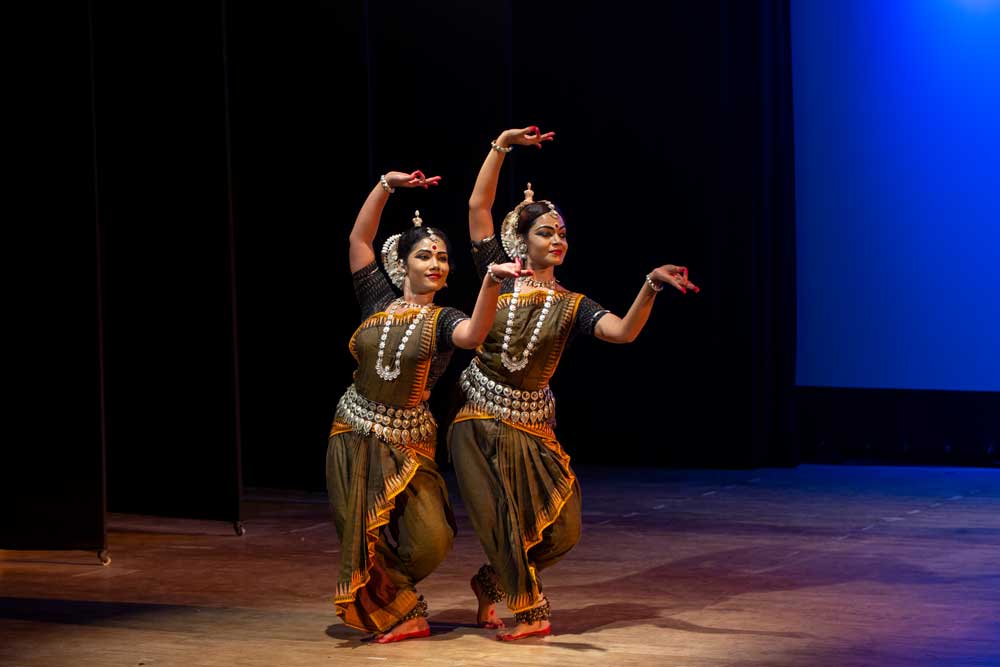Art can be a livelihood. Yet, women remain underrepresented in public cultural life. They experience fewer solo exhibitions, lesser leadership roles in arts institutions, and barely any recognition. Dedicated funding helps balance this disparity and makes the art world more inclusive and diverse.
Government and NGO support that includes everything from fellowships to business grants allows women artists, especially those from rural or marginalised communities, to turn talent into income and build self-reliant careers. Women from tribal, folk, and rural backgrounds often hold traditional art forms such as mural painting, weaving, embroidery, music, and dance. Schemes help preserve this cultural heritage while providing livelihoods to communities.
Why Do Women In The Arts Need Funding?
Grants and residencies give women artists the financial space to explore new ideas, experiment with visual, performing and literary mediums, engage in research, workshops, cross-disciplinary practices, and mentoring. This broadens India’s creative ecosystem. It also helps to shift power dynamics and amplify women’s voices.
A Few Success Stories
In Prayagraj, Soumya Singh of Laveen (natural tie dye clothing) and Anupriya Sharma (jute jewellery built thriving micro businesses, with turnovers of ₹15 lakhs and ₹19 lakhs respectively. State government support in training, registration, and marketing enabled their success.
Sri Lankan Tamil refugee women such as Nega R, who mastered aari embroidery in camp workshops, have gained recognition, launched social media driven ventures, and become trainers themselves. This is thanks to the Tamil Nadu government and NGO skill initiatives.
Launched by Oscar-winning producer Guneet Monga Kapoor at Cannes 2025, Women in Film (WIF) India’s fellowship supports women producers like Tillotama Shome, Rucha Pathak, and Dimpy Agarwal to access global platforms, mentorship, and film funding. It is a structural intervention for gender equity in Indian cinema.
Government Schemes Supporting Women In The Creative Economy
The Ministry of Culture offers several grants, which include senior and junior fellowships, emeritus fellowships, and scholarships for young artists across classical dance, music, theatre, visual, folk, and minor arts. These bring financial assistance to pursue training, undertake projects, and sustain artistic practice.
Sangeet Natak Akademi offers encouragement grants, senior fellowships, and scholarships for performing arts such as classical, folk and theatre. These help women build credibility, hone their craft, document traditions, and reach wider audiences.
Under the National Handicrafts Development Programme (NHDP), subsidies for training, marketing, exhibitions, and skills upgradation support women artisans in the handicrafts and handloom sectors.
The Support to Training and Employment Programme for Women (STEP) funds institutions to run vocational and arts training programs for women across traditional and contemporary crafts, enabling livelihood alternatives and skills development beyond unpaid domestic roles.
The Stand-Up India loan scheme provides bank loans (between ₹10 lakh and ₹1 crore) to women and SC/ST entrepreneurs, including those starting art related businesses such as design studios or craft production units. Under this scheme, 80 per cent of loans to date have been directed to women entrepreneurs.
Mahila E-Haat is an online marketplace run by the Ministry of Women and Child Development for women entrepreneurs to showcase and sell products like handicrafts, textiles and décor, enabling direct digital access to buyers.
The Department of Biotechnology’s programmes and other schemes like solar-powered looms initiative offer funding and equipment to women folk artists and artisan groups for improved productivity and income generation.

Private And NGO-led Support Schemes
The Gowry Art Institute in Kerala is a Trust devoted to promoting women artists in the visual arts, offering residencies, scholarships, exhibitions, workshops, international exchange, publications, and critical dialogue to promote women’s artistic voices.
Since 1981, the NGO Dastkar has organised bazaars like Dastkar Mela, supporting craft groups led by women. It connects artisans to buyers, offers design mentorship, promotes sustainability, and crafts clusters across the country.
The Tribal Women Artists Cooperative (TWAC) provides institutional structure for tribal women painters to market their work, participate in international exhibitions, reinvest in community welfare, and preserve mural art traditions.
Through initiatives like Project Puthri and Project Nipuni, the Avtar Human Capital Trust offers scholarships, career training, arts-related education, leadership skills and bridge programs, helping young women gain access to arts and professional pathways. It engages with schools and colleges in Tamil Nadu.
The Impact Of Funding Women In The Arts
• Many women artists now support families, obtain bank credit, gain savings, and financial independence.
• Traditional art forms such as tribal murals, handloom, and folk theatre gain visibility and survive through both heritage and commercial value.
• Women from SC/ST, minorities, rural, refugee backgrounds engage in meaningful economic activity and leadership.
• Grants tied to school art programmes, residencies, mentorship, career guidance broaden participation.
• Structured schemes like WIF India signal a commitment to gender equity in culture and arts institutions.
Challenges And Gaps
Access and outreach: Many rural or marginalised women may still be unaware or excluded due to literacy, language, or bureaucratic barriers.
Unequal access across regions: The availability of state-level support varies widely. Tamil Nadu, Delhi and Karnataka are more active, while others lag behind.
Insufficient scale: While thousands of women benefit each year, millions more remain underserved, especially in literature, contemporary digital art, filmmaking and curatorial work.
Post scheme continuity: Artists often need long-term support beyond one-time grants. Follow-up mentorship, marketing support, and exhibitions are critical.
Evaluation and data transparency: Systematic tracking of women beneficiaries, impact metrics, and feedback to refine schemes are needed.
To scale this impact, India needs wider awareness and outreach, especially in remote areas. Application processes need to be simplified along with stronger local support via Mahila Shakti Kendras, NGOs, and advisory networks. Women artists should also be integrated with policy-making bodies such as cultural institutions, juries and boards. Additionally, there should be structural support across regional languages.